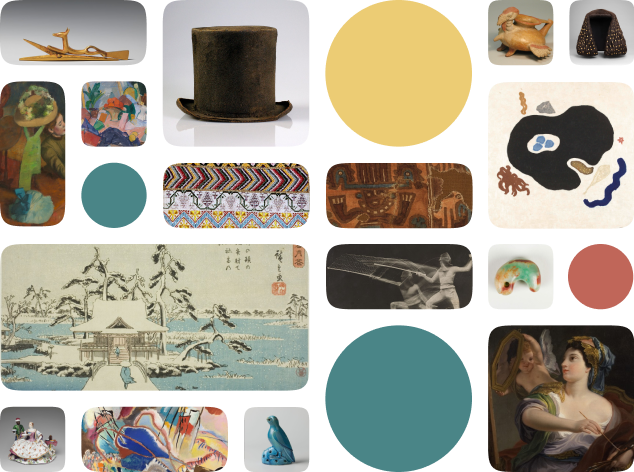Dagger with Sheath
Creator Name
Cultural Context
Date
Source
About the Work
This dagger has two distinct stylistic elements that associate it with 17th-century weapon-making. First, the gem-studded jade hilt comes from a Mughal chilanum. “Chilanum” is the English collectors’ term, likely derived from an Indian term, for a group of daggers with flaring, decorative pommels (the curve at the end of the hilt). They originated in the Deccan region of India. The blade, meanwhile, has a cutout in the middle. This style was popular across Central and South Asia starting from the 16th century. The swordsmith placed a wire from the hilt down the center of the cutout, where they strung six polished ruby and emerald beads. Art historians have identified pierced blades of this type across Asia. They are not sure whether there was one center of craftsmanship that produced most of these blades, or whether swordsmiths across Asia imitated the style. This example comes from either Turkey or India—a testament to how far swords traveled.
Metropolitan Museum of Art Object Description
Dagger with sheath
Work details
"--" = no data available
Title
Creator
Worktype
Cultural Context
Material
Dimensions
Technique
--
Language
Date
Provenance
Style Period
--
Rights
Inscription
Location
Source
Subjects
Topic
--
Curationist Contributors
Related Content
All Works in Curationist’s archives can be reproduced and used freely. How to attribute this Work:
Unknown, Dagger with Sheath, late 17th century. Metropolitan Museum of Art. This dagger and scabbard have two distinct stylistic elements that associate them with 17th-century weapon-making across Asia. Public Domain.
Help us improve this content!
Let our archivists know if you have something to add.
Save this work.
Start an account to add this work to your personal curated collection.
